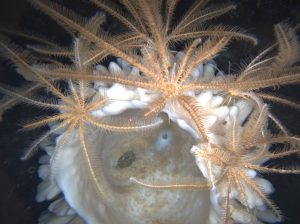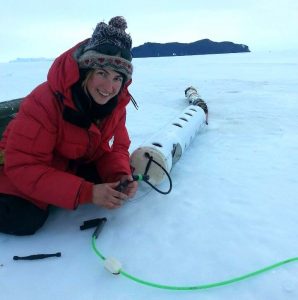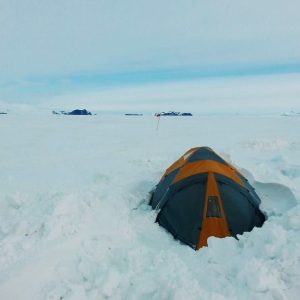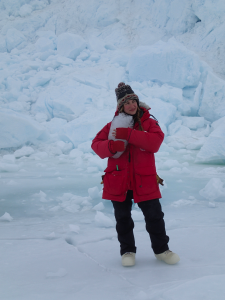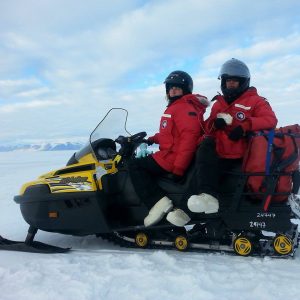Community structure and zonation of Antarctic benthic invertebrates: using a remotely operated vehicle under ice to define biological patterns
A Thesis Defense by Dorota Szuta
Benthic Ecology & Geological Oceanography Labs
Wednesday, October 25th at 4pm
MLML Seminar Room
Dorota Szuta is a Master’s student under the guidance of Dr. Stacy Kim of the Benthic Ecology lab and Dr. Ivano Aiello of the Geological Oceanography lab. She earned her BS degree in Marine Biology at UC Santa Cruz in 2009. After her undergraduate work, she worked in the Benthic Ecology lab as a field diver and lab tech for two years. In her free time, she likes to play music, make art, and pet dogs. Her Master's thesis focuses on communities of benthic invertebrates under ice in Antarctica.
Thesis Abstract:
The Ross Sea, Antarctica is a deep bay of the Southern Ocean that exhibits seasonal sea ice and is adjacent to a permanent ice shelf overlying seawater. Though the shallow-water seafloor communities in the Ross Sea are known to be high in species richness and abundance, the deeper sublittoral zone (approximately 25 m – 200 m) has been generally understudied and, especially under the Ross Ice Shelf, the benthic community composition is largely unknown. In 2008 and 2009, imagery of the seafloor at two sites under the permanent Ross Ice Shelf and two sites under the seasonal ice in the Ross Sea was collected via remotely operated vehicle (ROV) at depths to 300 m. Several patterns in Antarctic benthic communities were seen over multiple environmental gradients. Species abundance typically exhibited a unimodal distribution with depth, reflecting a food limitation at the deep end and potentially ice disturbance on the shallow end. Diversity and depth had quadratic relationship at two of three sites encompassing a depth gradient. In terms of functional groups, the proportion of suspension feeders decreased with depth at one site, and no pattern was found at other sites. The group sessile predators, comprised of several species of anemones, increased with depth proportionally, suggesting that they use a range of feeding strategies to adapt to life at depth. Benthic communities under seasonal ice were different than those under permanent ice shelves, with higher overall species diversity, a greater proportion of suspension feeders, and a degree of magnitude higher abundance.


